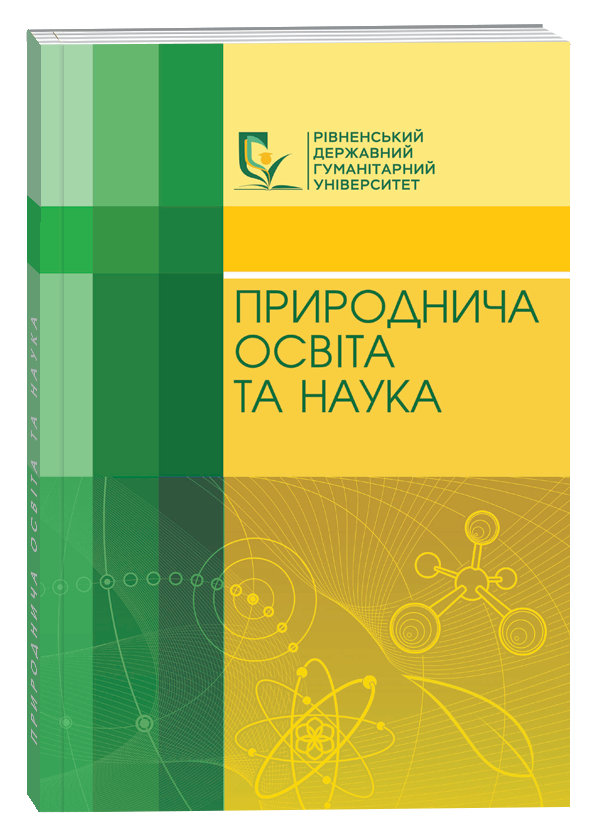DIVERSITY OF NATURE-RESOURCE POTENTIAL OF UKRAINIAN CARPATHIANS AS THE CRITERION TO VALUATE THE CONSISTENCY OF ECOSYSTEMS OF UKRAINE
Abstract
It is stated that Claude Shannon’s theory of entropy as the measure of randomness to help study the data statistic performance also serves to be among the most efficient approaches to quantitative valuation of the diversity and the consistency of ecosystems’ nature-resource potential (NRP). It is substantiated that, with six types of nature resources comprising the integral (total) NRP (mineral, water, land, forest, fauna, natural recreation resources), the maximum value of its absolute entropy would theoretically be 2,586, while the relative entropy – 1,0. The measure of the consistency of Ukrainian ecosystems’ NRP will be determined by characteristics varying from 0 to 1. It is argued that, the higher is the heterogeneity of ecosystems’ NRP and its relative entropy, the less degree of the consistency would be observed with the nature-resource potential of the region. The provincial ecosystem of the Ukrainian Carpathians with its highest degree of NRP diversity and the lowest degree of the consistency (which allows for the use of the 100-point close and open valuation scales) is suggested to be the criterion for the comparative analysis of the diversity and the consistency of NRP within ecosystems of Ukraine. Among all provincial ecosystems, the Ukrainian Carpathians are distinct for the NRP’s highest diversity (100 points). It is then followed by the Polissia (87 points), the Crimean Steppe (85 points), the Crimean Mountainous (85 points), and the East-Ukrainian provincial ecosystems, these followed by the Left-Bank-Dnieper-Pryazovska, the Dniester-Dnieper, the West-Ukrainian and the Prychornomorska provincial ecosystems, while the Left-Bank Dnieper, the Prychornomorska-Pryazovska, the Zadonetsko-Donska, the Podillia-Prydniprovska (63 points), and the Donetsk (48 points) provincial ecosystems manifest the lowest values of the diversity. Among oblast-level ecosystems, the highest-degree potential’s diversity is observed as follows (descending order): the Pre-Carpathian Heights (102 points), the External Carpathians, the Roztoky-Opillia Hilly-Mountainous, and the Kyiv Polissia provincial oblasts. On the opposite side we can observe the South Podillia Heights, the Prydnistrovska-East Podillia Heights, the Donetsk Heights, the South Moldavian Slope Heights, and the Zadnistrovsko-Prychornomorska Lowland (34 points) oblasts with their lowest-degree potential’s diversity. The ecosystem NRP’s consistency increases with the reduction of the values of its diversity. The highest degrees of NRP consistency (homogeneity) are manifested by provincial ecosystems as follows: the Donetsk (441 points), the Podillia-Prydniprovska (344 points), and the Zadonetsko-Donska (308 points) ecosystems. The lowest degree of homogeneity (consistency) is observed in the Crimean Steppe (197 points), the Polissia (182 points), and the Ukrainian Carpathians (100 points) provincial ecosystems. It is found that Riemann valuation results are the evidence of the effect of natural and social regularities in the development of pr oductive forces.
References
2. Голубець М.А. Екосистемологія. Львів : Поллі. 2000. 316 с.
3. Гродзинський М.Д. Пізнання ландшафту: місце і простір : монографія; у 2-х т. Київ : Видавничо-поліграфічний центр «Київський університет». 2005. Т. 1. 431 с.
4. Гродзинський М.Д. Пізнання ландшафту: місце і простір : монографія; у 2-х т. Київ : Видавничо-поліграфічний центр «Київський університет». 2005. Т. 2. 503 с.
5. Зінченко Я.В., Чичикало Н.В. Основні індекси для оцінки стану біорізноманіття. Сучасний стан регіональних екологічних проблем та шляхи їх вирішення : матеріали Міжнародної наукової конференції молодих вчених. Одеса : ОДЕКУ. 2014. С. 98–100.
6. Руденко В.П. Географія природно-ресурсного потенціалу України : підручник; у 3-х част. Чернівці : Чернівецький нац. ун-т. 2010. 552 с.
7. Руденко В.П., Руденко С.В. Оцінка міри своєрідності (унікальності) структури природно-ресурсного потенціалу природних регіонів України. Український географічний журнал. 2015. № 1. С. 27–32.
8. Руденко В.П., Руденко С.В., Худіковська-Флікс В.А. Своєрідність компонентних структур природно-ресурсного потенціалу фізико-географічних регіонів України. Науковий вісник Чернівецького університету. Серія «Географія». 2014. Вип. 724–725. С. 184–193.
9. Fischer T.B., Jha-Thakur U., Hayes S. Environmental impact assessment and strategic environmental assessment research in the UK. Journal of Environmental Assessment Policy and Management. 2015. Vol. 17 (01). P. 1–12.
10. Rudenko S., Rudenko V. Nature-resource potential of natural regions of Ukraine in present-day figures. Екологічні науки. 2023. Вип. 6 (51). С. 84–89.
11. Shannon, Claude E. A Mathematical Theory of Communicationю Bell System Technical Journal. 1948. Vol. 27 (July, October). P. 379–423, 623–656.
12. Smyth EIs impact assessment ensuring proper prediction and assessment of the environmental, economic, and social impacts of projects – how to reduce bias? Impact Assessment and Project Appraisal. 2021. № 39 (4). 352–353. DOI: https://doi.org/10.1080/14615517.2021.1905222.






